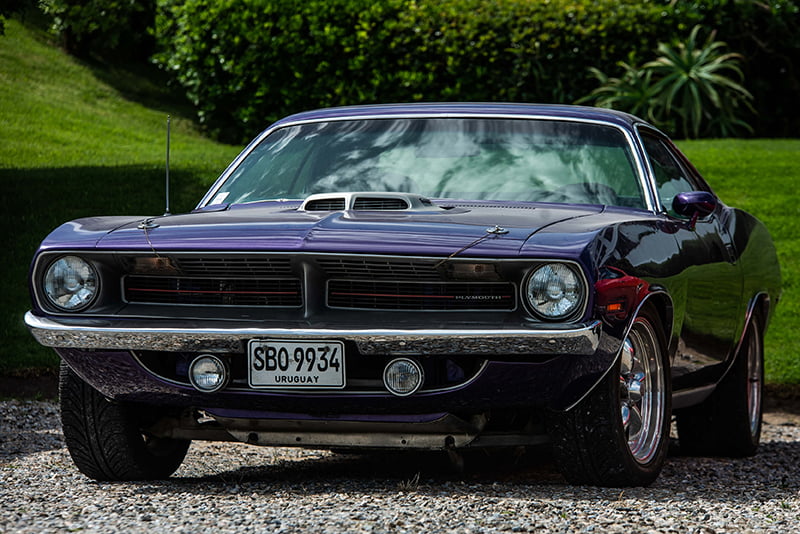If you’re a car lover, you’re no doubt familiar with Hemi motors and the cult following that they have developed over the years – but where did it all begin?
If you were born before the 1960’s and a bit of a revhead, you’ll likely remember the automotive phenomenon that was created by Chrysler’s Hemi motors during the fifties, sixties and seventies. For those who’ve long been muscle cars or drag racing enthusiasts, you’ll be more than aware that the 426 Hemi engine is one of the most iconic motors on the market thanks to it’s sheer power and performance. However, it’s important to note that these aren’t vintage collectors items, as Hemi motors are still in production today at Chrysler for their Dodge trucks released from 2003 and onwards.
However, even if you’re not savvy with the world of cars, it’s still likely that you’ve still come across this synonym for big, powerful engines in the automotive industry – but where did they come from, and what makes them so special?
An Introduction To Hemi Motors
Hemi motors and engines, known by the trademark Hemi, are what we call a series of American I6 and V8 gasoline engines built by Chrysler with hemispherical combustion chambers. Chrysler have pioneered and manufactured three types of Hemi motors for passenger automobiles: the first generation known as the FirePower engine made from 1951 to 1958, the second from 1964 and 1971, and the third which was revived in 2003. Although the concept is mostly linked to Chrysler as a marketing term and brand in itself, many other automotive manufacturers have since incorporated similar designs into their own models.
In a nutshell, a hemispherical cylinder head – also known as a ‘hemi head’ – gives an efficient combustion chamber with extremely good surface to volume ratio. With minimal heat loss to the head, it essentially allows for two large valves. However, a hemi-head allows no more than two valves per cylinder, and these large valves are somewhat heavier than in a multi-valve engine. The intake and exhaust valves lie on opposite sides of the chamber and necessitate a ‘cross-flow’ head design.
Since the combustion chamber is a partial hemisphere, a flat-topped piston would yield too low a compression ratio unless a very long stroke is used, so to attain the desired compression ratio the piston crown is domed to protrude into the head at top dead centre. The result presents a combustion chamber in the shape of the space between, where the domed piston stops and the dome shape in the head receives it.
The design of hemi motors places the spark plug at or near the centre of the chamber, as a means to promote a strong flame front. The hemi-head design places the spark plug at or near the centre of the chamber to promote a strong flame front. However, if the hemi-head hemisphere is of equal diameter to the piston, there is minimal squish for proper turbulence to mix fuel and air thoroughly. As a result, because of a lack of said squish, hemi-heads are more sensitive to fuel octane rating, and a given compression ratio will require a higher octane rating as a means to avoid pre-detonation in a hemi engine when compared to other conventional engine designs.
Significant challenges in the commercialisation of engine designs using hemispherical chambers revolved around the valve actuation, specifically how to make it effective, efficient, and reliable at an affordable cost. Although 180 horsepower doesn’t sound like much in today’s marketplace, the first release of Hemi motors in vehicles released in 1951 was nothing short of revolutionary. These days, the Hemi engines used in RAM trucks and Dodge models now reach metrics of over 400 horsepower, so it’s no surprise that this form of motor is still revered by revheads and automotive enthusiasts all around the world.
Your Guide To Everything Classic Cars
Finding a fellow vintage auto enthusiast can feel a bit like finding a needle in a haystack, but rest assured that Classic’s Garage understands the thrill more than most. Having spent forty years collecting anything and everything from matchbox cars to hub caps, he’s successfully followed his passion to source, collect and stock beautiful and low mileage classic automobiles from around the world. With extensive experience in the automotive industry, it was only a matter of time before Wayne expanded on his love of vintage, iconic vehicles to share his knowledge and passion with the public.
Although his passion is for automobiles built before 1978, with a particular love for Buicks, Cadillacs, Lincolns, Oldsmobiles and even Fords, Wayne is just as passionate about the stories of the owners. Just like the cars, he has found that his fellow classic car enthusiasts all have wildly different attractions and logic behind their passion or hobby, and this often translates into how the car is presented. If it’s even remotely different, rare or just plain unusual, Wayne will overcome the relevant logistical and geographical challenges of bringing the cars to his showroom in Australia.
Classic’s Garage is a showroom conveniently located at Seventeen Mile Rocks, that specialises in the restoration and sales of vintage automobiles. If you’re on the hunt for Brisbane classic cars – quite simply, Wayne is your man. If you would like to arrange a viewing or inspect any other of our classic vehicles, please get in touch with us today.

